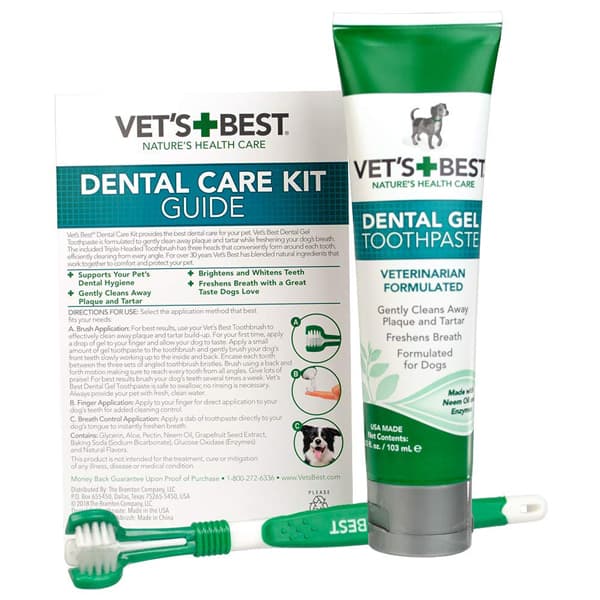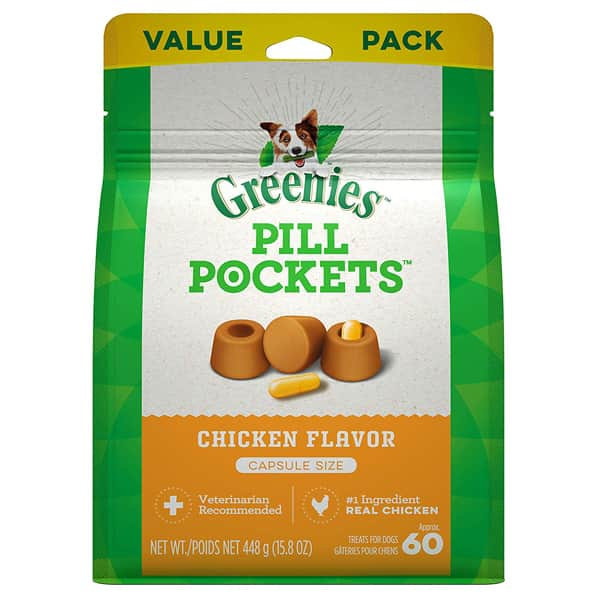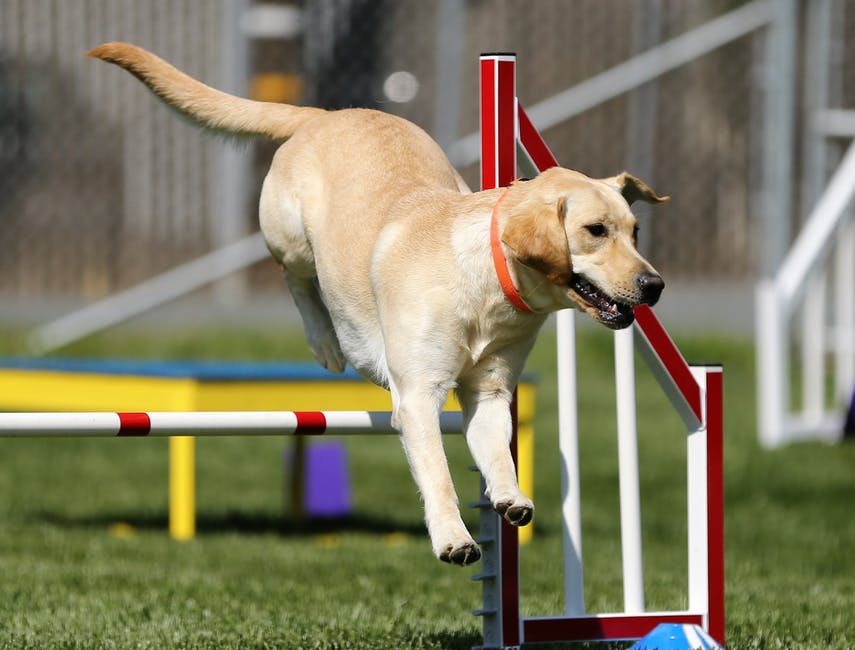Clindamycin, which is also known by a variety of other names including Antirobe, Antirobe, Cleocin, Aquadrops, Evoclin, and Dalacin, is one of the most commonly prescribed medications for dogs. It is an antibiotic and helps to eliminate bacteria that are causing an infection. Dogs can develop a variety of different types of infection and it’s important to treat them as soon as possible, as they can develop into more complicated health problems if left untreated. Of course, it’s also important to practice responsible antibiotic use and only use drugs like clindamycin when absolutely necessary.
What should you know about clindamycin for dogs?
Clindamycin is prescribed to treat soft tissue infections. This includes bones and teeth. Clindamycin has a relatively limited scope and is usually not given for general infections and is most often prescribed for oral infections, dental diseases, gingivitis, periodontitis, and osteomyelitis, abscesses, deep wounds, pus-filled infections, bite wounds, and bone infections. It can also be given post-surgery, and to treat both pneumonia and respiratory infections.
Clindamycin is a prescription medication, which means it is only legally available via a prescription from a licensed veterinarian. Unlike some medications, Clindamycin is FDA approved for use in dogs and does not need to be prescribed off-label.
In most cases, your vet will need to examine your dog before you receive the prescription. This gives the doctor a chance to observe the dog’s overall condition, view the affected area, and rule out any other potential problems.
Several symptoms might arise when your dog is suffering from a soft tissue infection in his or her mouth. These symptoms include:

Soft tissue inflammation in the mouth, also known as stomatitis, is a fairly common concern for dogs. It occurs when the gum and tongue tissue becomes inflamed and irritated. Though it might not be a serious issue, it can develop into a severe health problem if bacteria or infection enters your pet’s bloodstream from the initial site of the problem. The prognosis for dogs dealing with stomatitis is good, but it’s important to contact your vet and follow the treatment protocol that is recommended.
Symptoms of stomatitis include:
There are typically four different causes of inflammation in a dog’s mouth, including:
The causes of stomatitis vary from pet to pet. When puppies are getting their adult teeth while they still have baby teeth, it can cause overcrowding in the mouth (adult teeth are bigger than puppy teeth). Several metabolic disorders might trigger inflammation, which might trigger an abnormal amount of waste to accumulate in the bloodstream. The blood vessels in the mouth can become inflamed, which is common in diabetic dogs. There might also be inadequate levels of a hormone, which is a condition known as parathyroid. Inflammation in the mouth can also be caused by lymphoma.
In some cases, an injury or infectious disease will lead to inflammation in a dog’s mouth.
The variety of reasons why inflammation can occur is one of the main reasons it’s so important to take your dog in for a thorough examination before you begin a course of antibiotics. In many cases, in addition to getting the infection under control, you’ll also need to treat the underlying cause. Otherwise, the infection is likely to return.
It’s also important to determine if the underlying cause of stomatitis is serious, as would be the case with lymphoma. The sooner the origin of the problem is identified the sooner it can be treated, increasing your dog’s chances for a complete recovery.
To diagnosis stomatitis, your vet will examine your dog’s mouth and look for evidence of decay, lesions, plaque, or other noticeable causes of the inflammation. Blood work might also be done, which can help diagnose the underlying cause of the problem.
Antibiotics, including clindamycin, have proven to be the most effective line of defense against inflammation in the mouth. In severe cases, tooth removal might also be necessary.
It might be possible to prevent oral inflammation and infections for your dog or at least reduce his or her risk for developing a problem. Good oral hygiene, including teeth brushing and veterinarian cleanings, is an important part of caring for your dog’s overall health. There are also oral rinses available that can be mixed into your dog’s drinking water. Topical medications for the gums can also be effective.
The more you can do to prevent a problem from arising or recurring the better and the less your dog will need to take clindamycin and other antibiotics.
Administering Clindamycin
Giving your dog clindamycin is no different than giving most oral medications that can be taken with food. This makes it easier to give and allows you to grind up the medicine in food or put the pill into a treat. You can also coat it in butter or peanut butter to make it more pleasant. Most dogs can take the pill without an issue once it’s disguised by a pleasant flavor.
If your dog is difficult to pill, clindamycin can be given in a liquid suspension aquadrop, which might be available in a dog-friendly flavor. Your vet can explain your options to you when prescribing the mediation. Don’t be afraid to ask if you think there will be a problem once you get your pet home. It’s better to discuss your options than to forego giving your dog medication as directed because doing so is difficult – or impossible!
Clindamycin is available in 25 mg or 150 mg capsules and as drops containing 25 mg/1ml.
The usual dose of Clindamycin for dogs is 2.5 mg to 5 mg per pound your dog weighs every 12 hours. How long your dog will need to take two daily doses depends on the condition of your pet as well as his or her response to the treatment.
The dosage information provided here is intended to be a guide. You should always follow your vet’s recommendations when giving your dog any medication. If you notice the dose recommended by your vet is much lower or higher than the usual dosage listed here, you should ask your vet for an explanation as to why. Never decide to alter the dosage amount of medication recommended by your vet because it varies from what you’ve seen online.
Dosage of clindamycin depends on your dog’s infection, his or her overall health, and his or her weight and age. Your vet will prescribe the mediation in exactly the right dosage based on these factors and either provide it to you or send you to a pharmacist to fill the prescription based on those calculations. It’s important to not deviate from what your vet has prescribed. You should give your dog the entire dosage as recommended and continue to give it to your dog until the prescription runs out.
It might be tempting to stop giving your dog clindamycin or any other medication when his or her symptoms disappear, especially if they are problematic when it comes to taking medicine. This is never a good idea! It can lead to a recurrence of infection and make it more difficult to treat infections in the future. Always finish all of the medication prescribed to your dog by the vet.
Risks of Clindamycin

Though clindamycin is generally considered safe, like all medications, there are risks involved when giving it to your pet.
The most serious risk is that your dog will be allergic to the medication and it will trigger an unwanted reaction. In most cases, an allergic reaction will happen immediately after the first dose, but even if your dog has used clindamycin and other antibiotics in the past without a problem, it’s important to know the warning signs of an allergic reaction and take action if they develop.
Allergic reaction symptoms might include:
Clindamycin has also been known to trigger diarrhea in some dogs. In some cases, diarrhea will be bloody. If your dog experiences bloody diarrhea while taking the medication, you should not panic but you should contact your vet immediately. The medication might need to be adjusted or other precautions might need to be taken to prevent a problem.
Any time a dog has diarrhea, he or she is at risk for dehydration, especially if the problem is ongoing. Diarrhea, though common, should never be ignored. It’s important to let your vet know about the problem and to follow the appropriate protocol to help restore your pet’s health. This will likely mean fasting your pet for a short time and then switching to a bland diet for a few days to a week.
If diarrhea is severe, it might also be necessary to administer IV fluids to your dog. Dehydration can be a serious medical problem that causes complications, so it’s important to recognize the symptoms as soon as possible and take action. If your pet is not drinking, has dry gums, or seems lethargic, it’s a good idea to contact your vet and discuss IV rehydration therapy.
The risk of developing diarrhea as a reaction to clindamycin is higher for nursing puppies.
Clindamycin is rarely given long-term, but if your dog needs to take it for more than a month, your vet should conduct periodic liver and kidney tests and monitor your pet's liver and kidney health overall. Long-term use of many medications can cause liver and kidney damage and require special monitoring.
In addition to diarrhea, clindamycin might trigger a variety of other side effects, including:
Your vet needs to be aware of all the medications your dog is taking. Clindamycin should not be used in combination with other medications, including some antibiotics, so if you aren’t sure if your vet knows what your dog is already taking or you are visiting an emergency veterinarian facility where the doctors are not familiar with your pet’s health history and current circumstances, make sure you are clear that he or she is taking other medications.
Using Antibiotics Safely

A great deal of research has been conducted regarding safe antibiotic use in the medical field. It is believed that antibiotics tend to be over-prescribed, which is creating treatment-resistant diseases and making antibiotics less effective. Some believe this same problem is occurring in the veterinary field.
Statistics show that antibiotics are frequently prescribed to companion animals and it relatively common for veterinary surgeons to prescribe these medications without having first documented an infection. Post-surgery, a pet might be given a prescription to prevent infection when there is currently no infection present.
Many believe this to be an inappropriate and risky practice.
Unlike many drugs, the more frequently antibiotics are used, the less effective they become. This is due to the selection of resistant bacteria – basically survival of the strongest among bacteria.
There is a movement afoot to ensure that veterinarians and pet owners, not to mention everyone in the medical field, understand the implications of the overuse of antibiotics. Using antibiotics when they are not absolutely necessary can be risky for your pet’s health, as well as the pet community and human community in general. Stronger bacteria puts everyone at risk and can lead to there being an inability to effectively treat many diseases. Something that was once entirely treatable can mutate in response to antibiotics and become stronger and untreatable.
That said, if your vet has prescribed antibiotics for your dog, it’s important to discuss your concerns as they specifically relate to your pet. You should never choose to not give your dog a prescribed medication, to alter that medication, or to end the treatment early without first consulting with your vet.
Should You Be Concerned About Oral Cancer?
One of the scariest things about dealing with inflammation or irritation in your dog’s mouth is the concern that it could be cancer. In most cases, it will be nothing more than an infection and after a round of clindamycin treatment, your dog will be fine.
However, it’s important to take the risk seriously. In addition to relieving the discomfort and secondary symptoms your dog is experiencing as a result of inflammation or irritation in the mouth, it’s important to rule out the potential for a more serious issue such as cancer. And if your vet believes there might be a problem, it’s always better to catch it and treat it as early as possible. Your dog’s odds of survival increase a great deal when cancer and other health issues are treated early. Not to mention treatment might be less invasive and less expensive when there is early detection.
You are your dog’s best health advocate. You’ll likely be the first to notice something is out of the ordinary or there is a change that could indicate a health problem. This means it’s important for you to pay careful attention to how your dog behaves and what his or her “normal” is.
This might vary from dog to dog and you might learn that something that was once a concern is just normal behavior for your pet. But it’s always better to discuss any concerns with your vet and take action as early as possible. Many dog owners have been happy they took a better safe than sorry approach when a problem arose.
Product Image | Product Name | Buy Now |
|---|---|---|
Vet’s Best Enzymatic Dog Toothpaste | ||
GREENIES Pill Pockets Natural Dog Treats |
Is Clindamycin Safe for Dogs?
In most cases, the answer to this question is a resounding yes. If there are no contraindications and your dog has a soft tissue infection, clindamycin could be one of the best ways to treat the problem. It’s important to consult with your vet before giving your dog any medication or before altering or making changes to a prescription for your dog.
Clindamycin comes with relatively few side effects that do exist are relatively mild. However, it’s important to carefully monitor your pet when he or she is taking the drug because a mild side effect or reaction could develop into something more severe if not caught right away.
The best thing you can do for your dog is to work closely with your vet, be open and honest about any concerns, and monitor your dog’s health and well-being daily.







